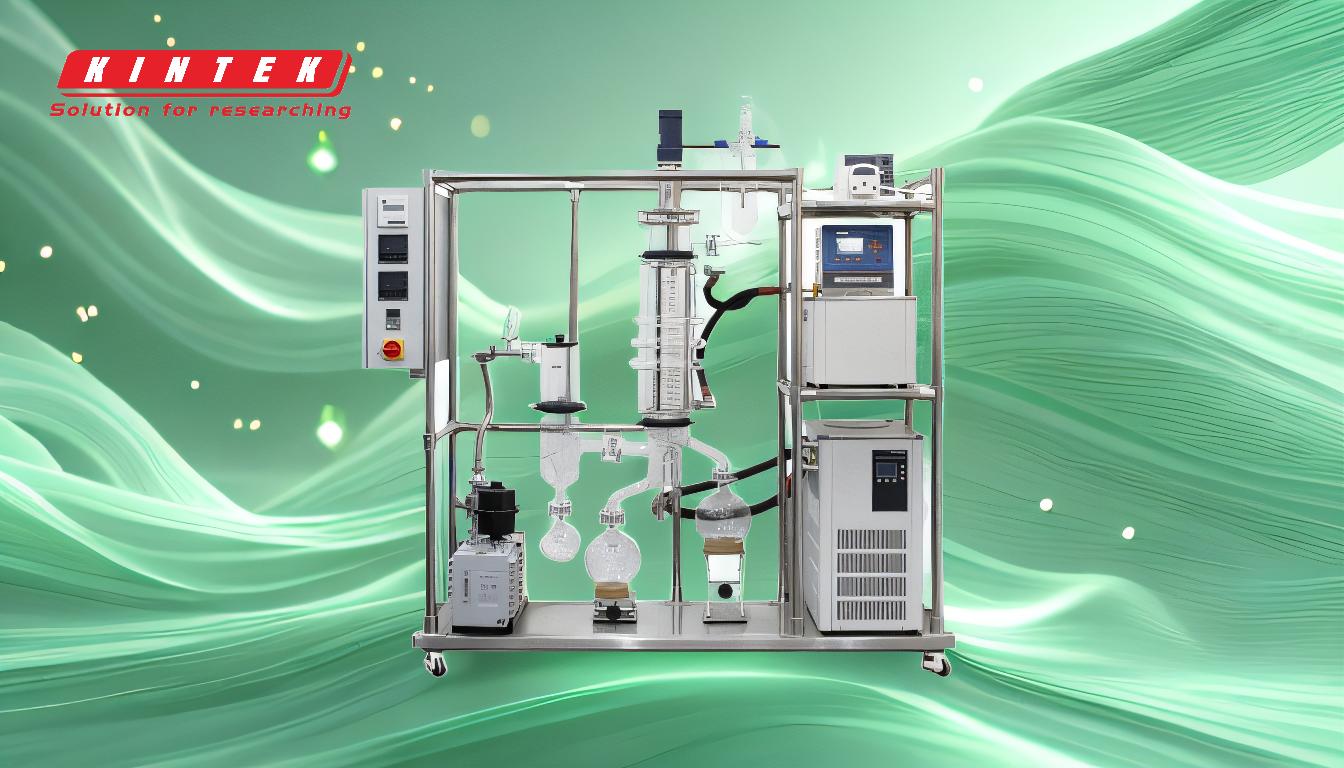Fractional distillation is a process used to separate components of a mixture based on their boiling points. Several factors influence its efficiency and effectiveness, including the boiling point differences between components, the use of vacuum systems, the equipment's design, and the specific requirements of the process. By understanding these factors, one can optimize the distillation process for better separation, reduced thermal degradation, and improved overall efficiency.
Key Points Explained:

-
Boiling Point Differences Between Components
- Fractional distillation is most effective when the boiling points of the components in the mixture differ by less than 25 °C (45 °F) under standard atmospheric pressure.
- If the boiling point difference is greater, simple distillation is usually preferred because it requires less complex equipment and achieves sufficient separation.
- The closer the boiling points, the more challenging the separation, necessitating the use of fractional distillation columns to achieve precise separation.
-
Use of Vacuum Systems
- Introducing a vacuum lowers the boiling points of the components, which is particularly useful for heat-sensitive materials that may degrade at higher temperatures.
- A vacuum system increases evaporation efficiency, reduces thermal degradation, and shortens residence times, making the process faster and safer.
- The vacuum degree is influenced by the vacuum pump's power and the system's tightness, with materials like PTFE providing better wear and corrosion resistance for sealing components.
-
Equipment Design and Components
- The efficiency of fractional distillation depends on the design and quality of the equipment, including the distillation column, vacuum pump, and sealing materials.
- Key components like vacuum tubes and sealing rings must be made from durable materials (e.g., PTFE) to ensure system integrity and longevity.
- The vacuum value must balance the equipment's pressure resistance and distillation efficiency to avoid system failures or inefficiencies.
-
Process Requirements and Product Characteristics
- The choice between fractional distillation and other methods (e.g., molecular distillation) depends on the specific product being separated and the process requirements.
- Fractional distillation is ideal for separating liquids with close boiling points, while molecular distillation is better suited for purifying and concentrating natural products under low vacuum pressure.
- Neither method is inherently superior; the choice depends on the application and the desired outcome.
-
Thermal Degradation and Residence Time
- Thermal degradation is a significant concern in fractional distillation, especially for heat-sensitive materials.
- Lowering the boiling points through vacuum application reduces the risk of degradation and ensures the integrity of the separated components.
- Shorter residence times, achieved through efficient vacuum systems, further minimize exposure to high temperatures, enhancing product quality.
-
System Tightness and Vacuum Pump Efficiency
- The tightness of the distillation system is critical for maintaining an effective vacuum and preventing leaks, which can compromise the process.
- The vacuum pump's power and efficiency directly impact the system's ability to achieve and maintain the desired vacuum level.
- High-quality materials and proper maintenance of the vacuum system ensure consistent performance and long-term reliability.
By carefully considering these factors, one can optimize fractional distillation processes to achieve efficient separation, minimize thermal degradation, and produce high-quality results tailored to specific applications.
Summary Table:
| Factor | Impact on Fractional Distillation |
|---|---|
| Boiling Point Differences | Effective separation requires boiling points to differ by < 25 °C (45 °F). |
| Vacuum Systems | Lowers boiling points, reduces thermal degradation, and shortens residence times. |
| Equipment Design | Durable materials (e.g., PTFE) and proper design ensure system integrity and efficiency. |
| Process Requirements | Choice of method depends on product characteristics and desired outcomes. |
| Thermal Degradation | Vacuum application minimizes degradation, especially for heat-sensitive materials. |
| System Tightness & Pump Efficiency | Critical for maintaining vacuum levels and preventing leaks. |
Optimize your fractional distillation process—contact our experts today for tailored solutions!












